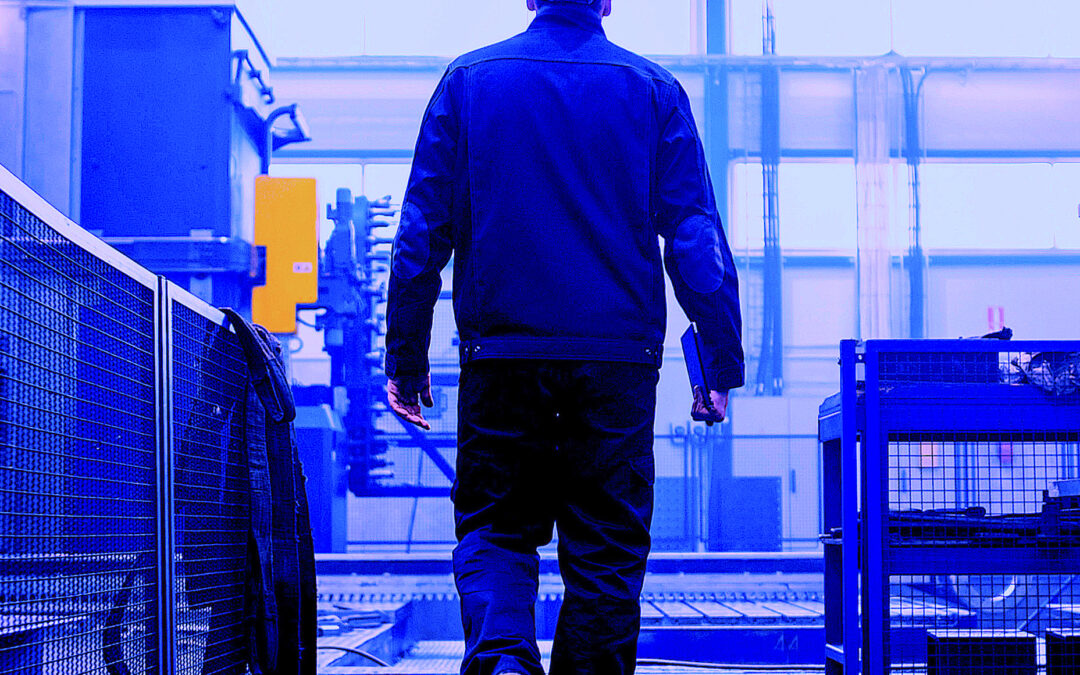As manufacturing ramps up amid the COVID-19 pandemic, as manufacturers return from China, as we look toward the road ahead with new technologies, there are bound to be challenges along the way. Responding to the need for epic-proportion health and safety accommodations is a big opportunity to rethink how work gets done by people, workgroups, and teams.
While we may see some of these challenges as real problems to the business and the workforce, I’m reminded of what industrialist Henry J. Kaiser once said: “Problems are only opportunities in work clothes.”
Many operations have already learned that remote meetings and working can be effective and save time. Technologies will continue to replace low-skilled, high-touch work activities. Even if effective vaccines and therapies for the current novel coronavirus don’t kick in as quickly as we hope, ensuring healthy workplaces now will pay big dividends during the upcoming flu season.
The Manufacturing Leadership Council, a division of the National Association of Manufacturers (NAM, Washington, DC) recently released what it characterizes as “some of the most common best practices” in the COVID-19 environment, from leading manufacturing organizations of all sizes. Titled “New Operational Practices to Consider in the Time of COVID-19,” this informative report only outlines not only what we’ve heard from the Centers for Disease Control and Prevention (CDC), but also goes into detail about many common manufacturing-workplace practices for staying safe and healthy.
Here’s a brief summary of topics that the report addresses:.
Site Access to Mitigate Exposure
♦ Eliminating visitor access; allowing third-party visitors critical for ongoing operations
♦ Self-certification questionnaires asking about symptoms, recent travel. etc.
♦ Temperature screening
Workstation Measures to promote Social Distancing
♦ Six-foot spacing, slowed production lines
♦ Plexiglass or vinyl barriers between workers
♦ Facial coverings, higher-grade PPE
♦ Standard preexisting PPE (hardhats, etc.) not shared
♦ Keyboard covers, personal keyboards
♦ Significant cleaning and disinfecting
Facilities and Traffic Management
♦ Limiting or discouraging congregation of staff
♦ Closing cafeterias and breakrooms, or rearranged for social distancing
♦ Touchless appliances
♦ Frequent hand-washing/sanitizing stations
♦ Cleaning restrooms more frequently
♦ Propping doors open to eliminate touchpoints
♦ One-way hallways and walkways
♦ Avoiding face-to-face communications with radios, texting
♦ Time-clock alternatives
Shift and Team Design
♦ Small and limited work team sizes, limited interaction with other teams
♦ Increasing time between shifts
♦ Hand-offs evaluated and reworked to be as touchless as possible
Illness or Diagnosis Response
♦ Plans for reporting illness and maintaining privacy
♦ Plans for positive COVID-19 test and tracing other contacts
♦ Plans for facility response positive test: Closing, disinfecting, communications
♦ Establish a working relationship with county health officials
Essential Travel Policies
♦ Personal vehicles vs. rental cars; hotel-room disinfecting, and dining policies
♦ Communicating safety protocols at customer locations
Returning Nonessential Workers
♦ Determining who should return vs. working remotely
♦ Employee family health status and travel distance and means
♦ Communicating clearly and regularly about on-site safety protocols
♦ Monitoring reintegration and reinforcing protocols
♦ Explaining the return-to-work philosophy to address employee concerns
What can you and your organization do right now? Click Here or on the previously provided link (above) to download the full report. Read it, share it, learn from it, and have a safe and healthy workplace, please.TRR
ABOUT THE AUTHOR
Bob Williamson is a long-time contributor to the people-side of the world-class-maintenance and manufacturing body of knowledge across dozens of industry types. His background in maintenance, machine and tool design, and teaching has positioned his work with over 500 companies and plants, facilities, and equipment-oriented organizations. Contact him directly at 512-800-6031 or bwilliamson@theramreview.com.
EDITOR’S NOTE: CLICK THE FOLLOWING LINKS FOR MORE PANDEMIC-RELATED ARTICLES
Don’t Neglect Your ‘Forgotten Assets’ (May 17, 2020)
Is Your Business A Great Place to Work? (May 2, 2020)
Making U.S. Manufacturing S.M.A.R.T. (Apr. 25, 2020)
Why Are Maintenance People Still Going to Work? (Apr. 5, 2020)
Let’s Give A Big Hand to The Trades (Apr. 4, 2020)
How to Develop A Successful Asset-Management Strategy (Apr. 3, 2020)
The ‘Best’ and The ‘Worst’ (Mar. 29, 2020)
Sending Them Home, Keeping Them Productive (Mar. 22, 2020)
Maintaining in A State of Emergency (Mar. 20, 2020)
8 Asset-Management Strategies to Help Survive The Recession (Mar. 19, 2020)
Thoughts on Making Your Skill Set Recession-Proof (Mar. 7, 2020)
Tags: reliability, availability, maintenance, RAM, health and safety, COVID-19, workforce issues, National Association of Manufacturers, NAM, Manufacturing Leadership Council



